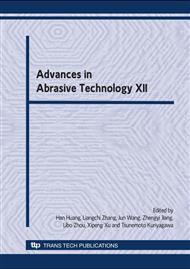p.9
p.15
p.21
p.27
p.33
p.38
p.43
p.49
p.55
Diamond Tools for the Grinding of Complex Ceramic Implant Surfaces
Abstract:
Until now, the complex kinematics and geometries as well as high quality requirements have prevented the use of all-ceramic prostheses for the medical treatment of knee joints. High-precision grinding and polishing processes for free-formed ceramic surfaces are essential for this purpose. Constantly changing contact conditions have to be considered to ensure a constant material removal. Within this work, appropriate tools are introduced which are able to adjust to the form variation of the component contour.
Info:
Periodical:
Pages:
33-37
Citation:
Online since:
June 2009
Authors:
Keywords:
Price:
Сopyright:
© 2009 Trans Tech Publications Ltd. All Rights Reserved
Share:
Citation:


